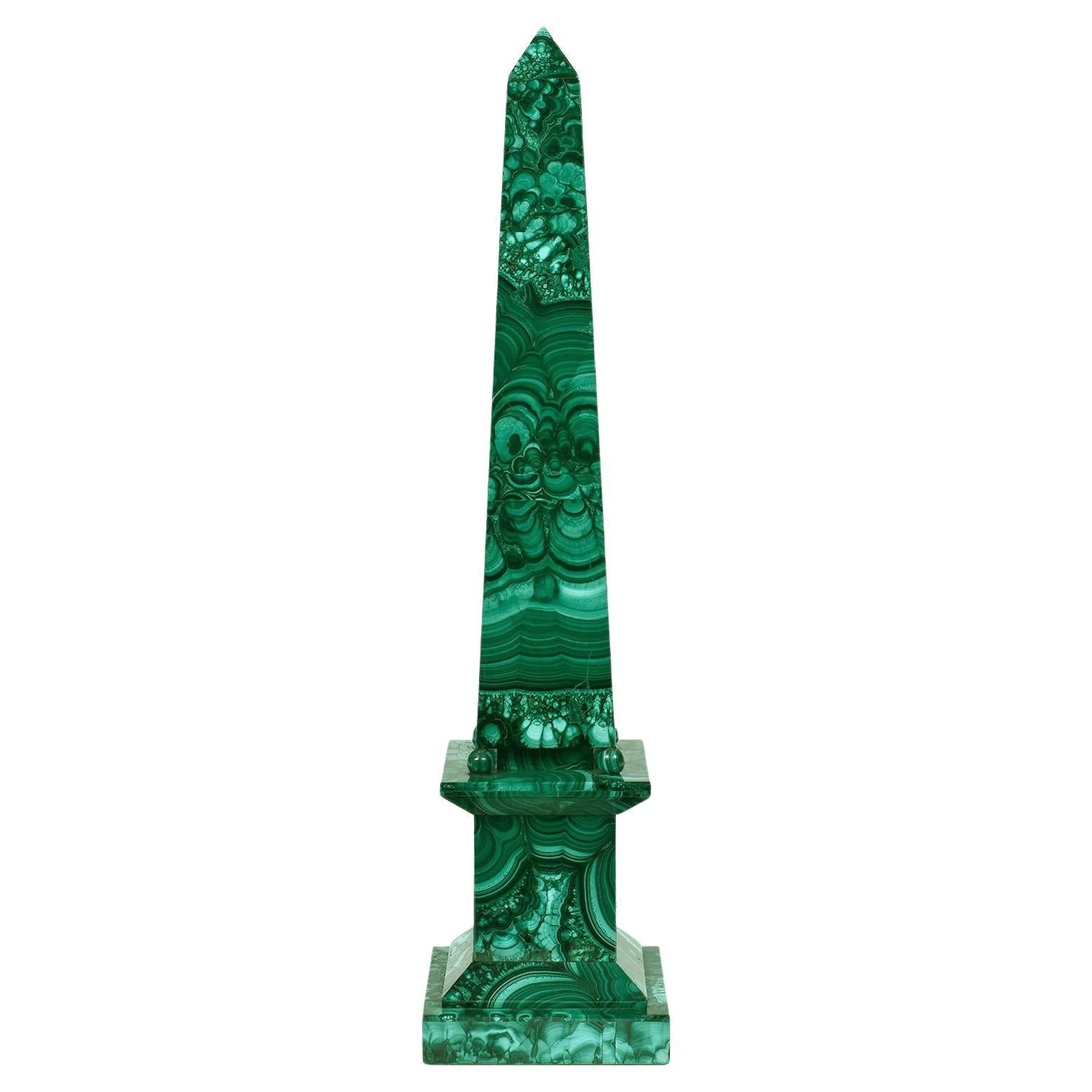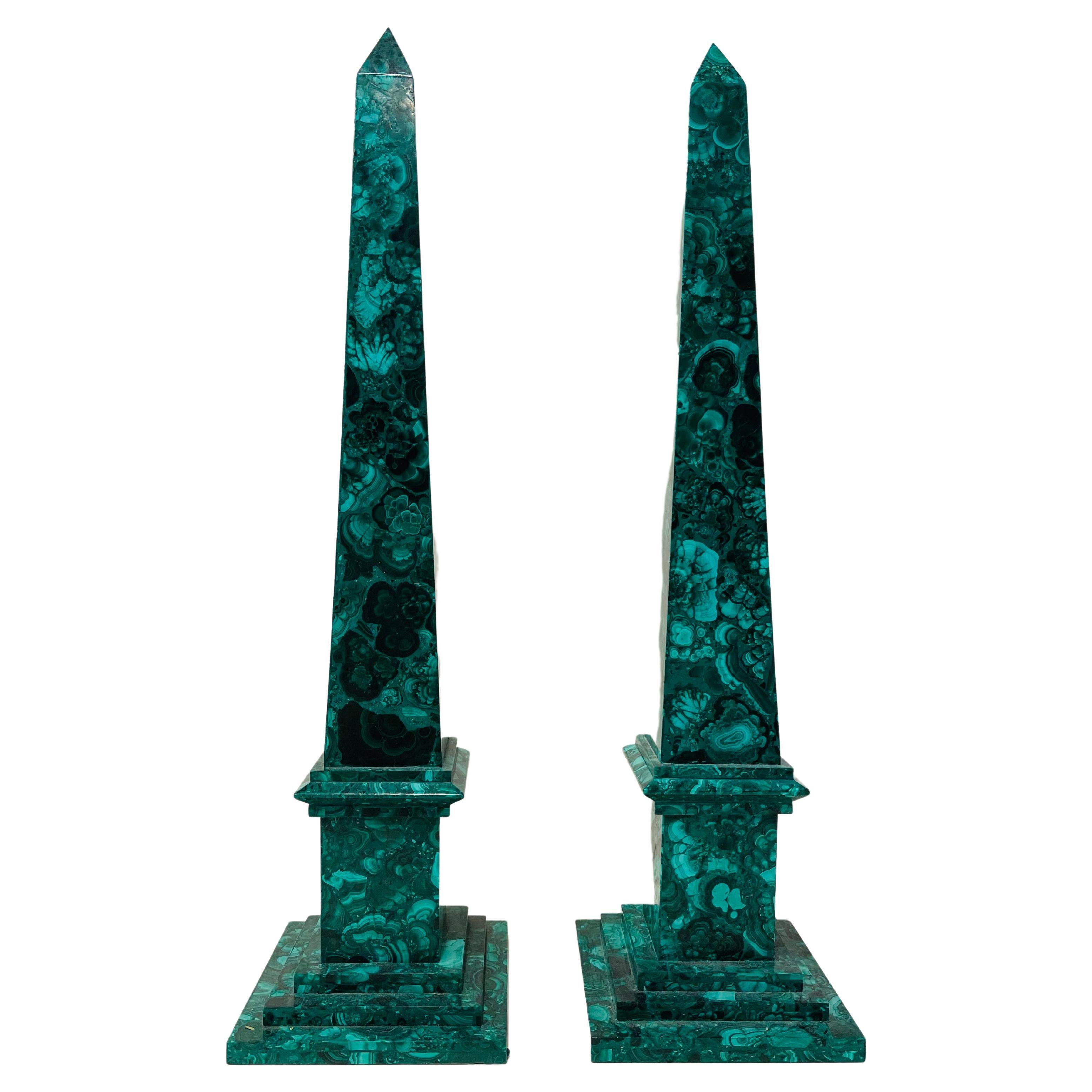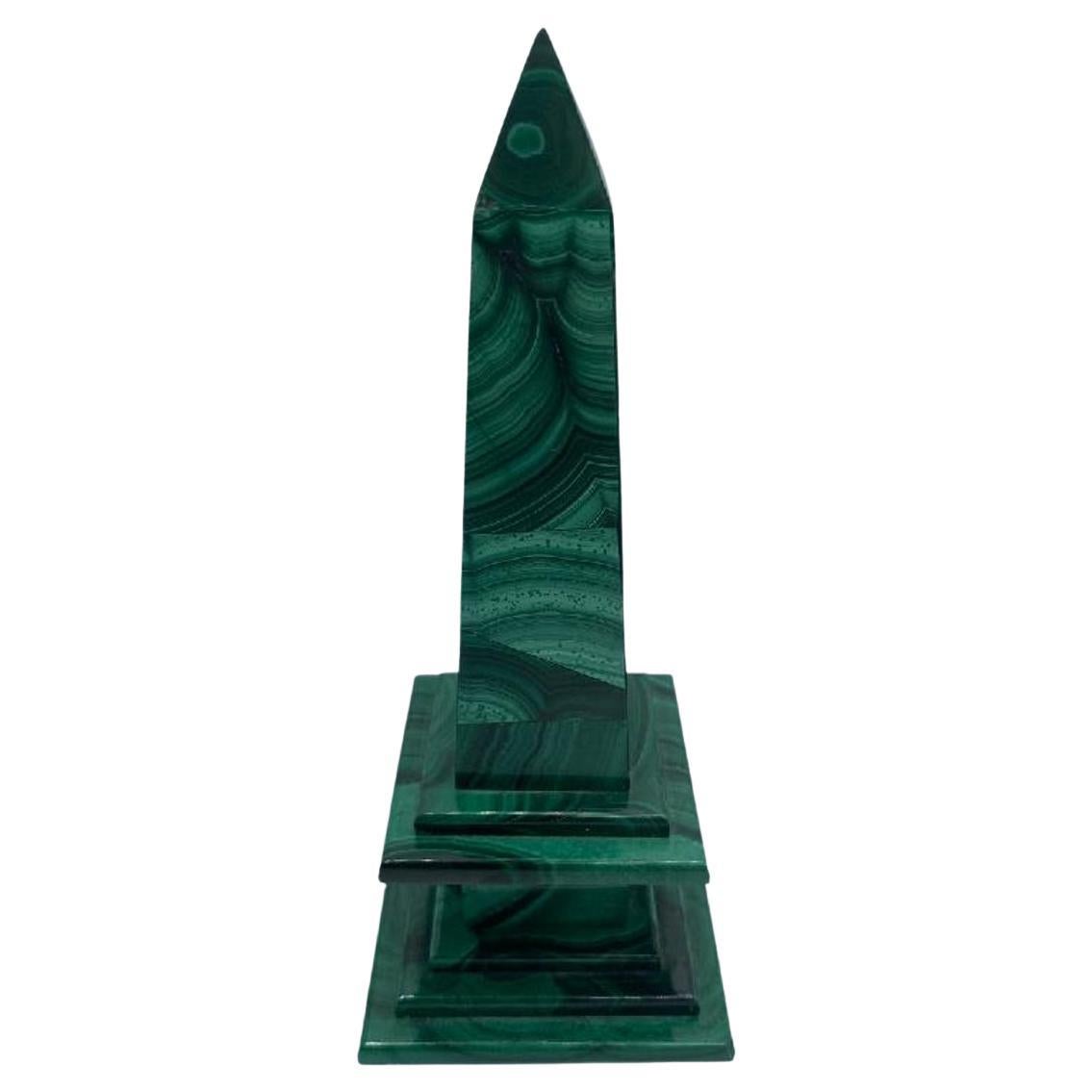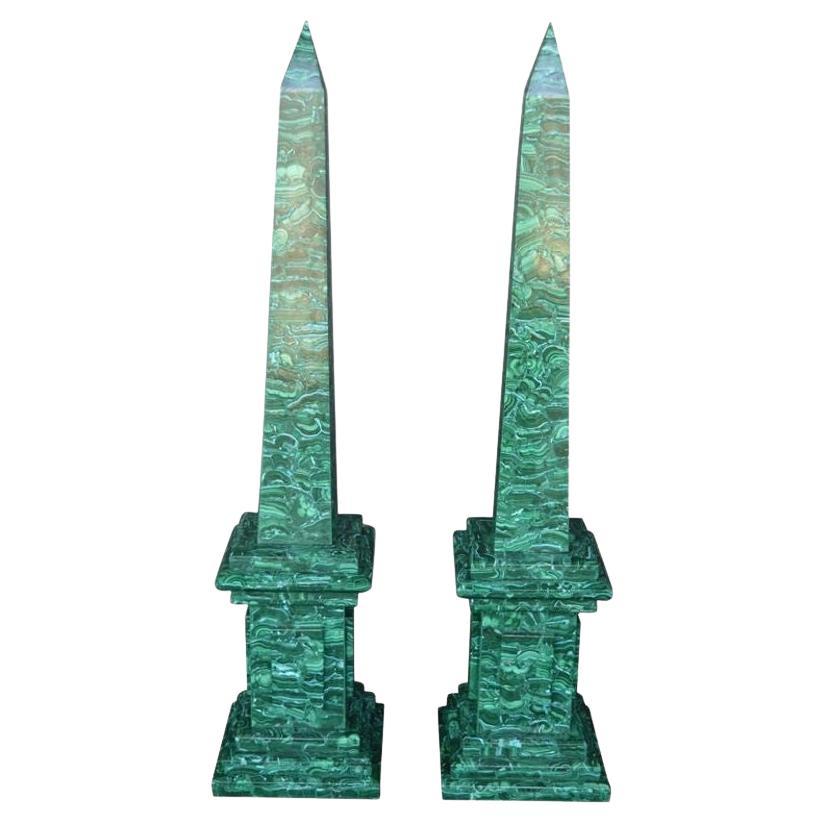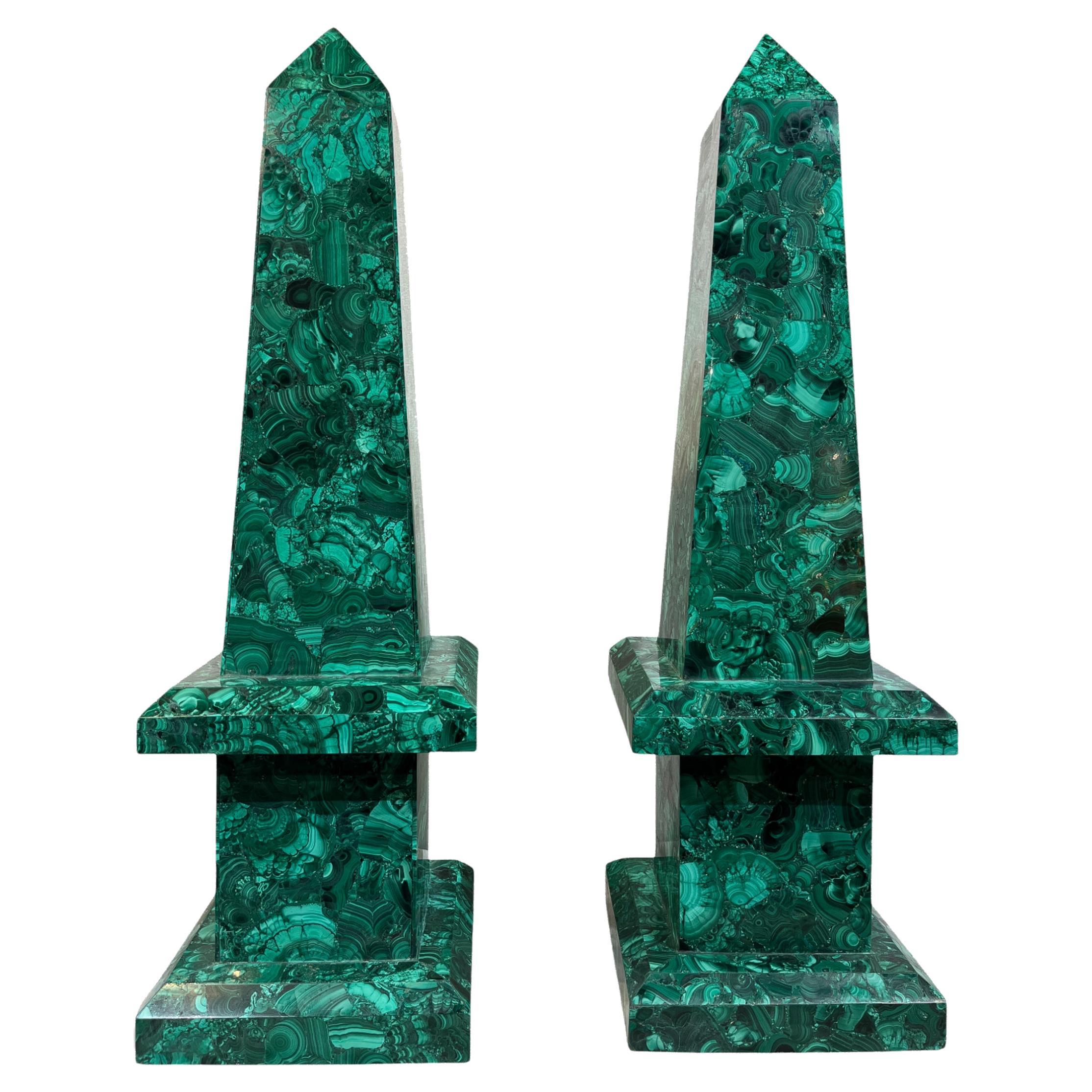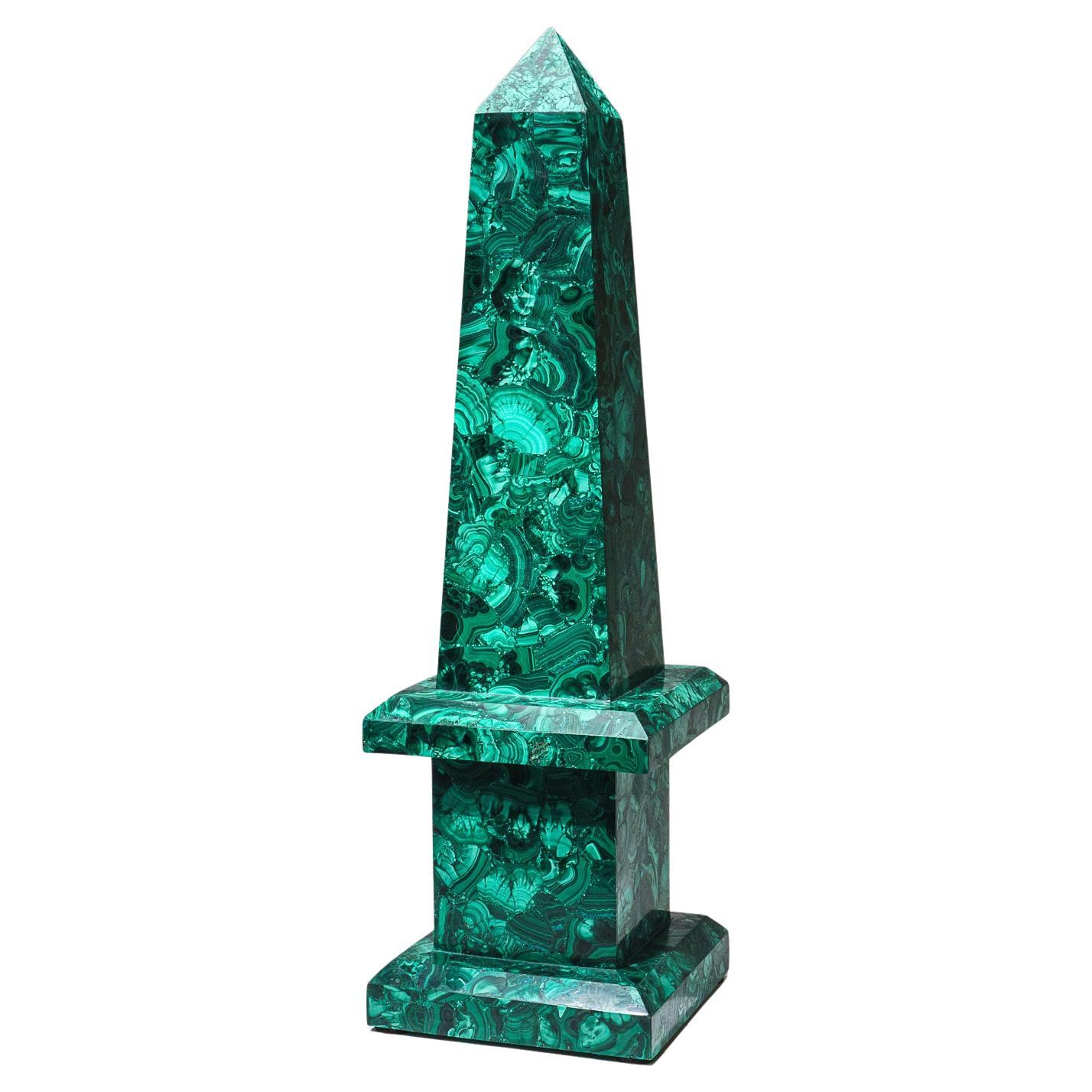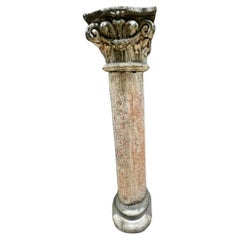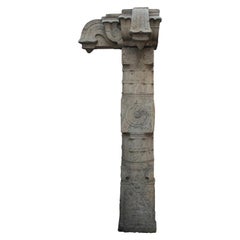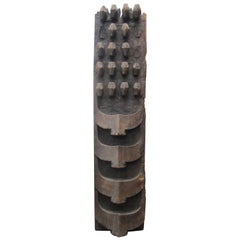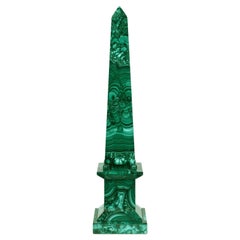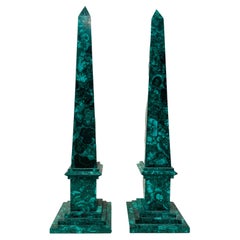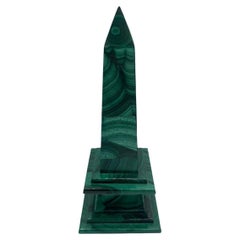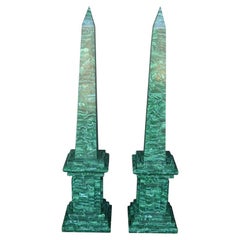Want more images or videos?
Request additional images or videos from the seller
1 of 5
Malachite Obelisk
$8,000per set
£6,154.13per set
€7,143.20per set
CA$11,281.91per set
A$12,637.64per set
CHF 6,637.74per set
MX$153,669.60per set
NOK 84,055.51per set
SEK 79,791.28per set
DKK 53,312.45per set
About the Item
The use of malachite dates back to ancient civilizations. The Egyptians, Greeks, and Romans valued malachite for its beauty and supposed protective properties. In ancient Egypt, it was used for amulets, jewelry, and even ground into powder for eye shadow. The Greeks and Romans carved it into decorative objects and used it as a pigment for painting.
Malachite obelisks, in particular, gained prominence in the 18th and 19th centuries. These obelisks, often smaller than their stone counterparts, were highly prized in Europe and Asia. The Russian Tsars, fascinated by the stone's beauty, commissioned grand works of art and architecture featuring malachite. The most famous example is the Malachite Room in the Winter Palace (now part of the Hermitage Museum) in St. Petersburg, which showcases extensive malachite decoration, including columns, fireplaces, and furniture.
- Dimensions:Height: 28.35 in (72 cm)Width: 5.12 in (13 cm)Depth: 5.12 in (13 cm)
- Sold As:Set of 2
- Style:Anglo-Indian (Of the Period)
- Materials and Techniques:
- Place of Origin:
- Period:
- Date of Manufacture:XIX
- Condition:Wear consistent with age and use.
- Seller Location:Mexico City, MX
- Reference Number:1stDibs: LU3531340248092
About the Seller
5.0
Vetted Professional Seller
Every seller passes strict standards for authenticity and reliability
Established in 1968
1stDibs seller since 2018
8 sales on 1stDibs
Typical response time: A week
- ShippingRetrieving quote...Shipping from: Mexico City, Mexico
- Return Policy
Authenticity Guarantee
In the unlikely event there’s an issue with an item’s authenticity, contact us within 1 year for a full refund. DetailsMoney-Back Guarantee
If your item is not as described, is damaged in transit, or does not arrive, contact us within 7 days for a full refund. Details24-Hour Cancellation
You have a 24-hour grace period in which to reconsider your purchase, with no questions asked.Vetted Professional Sellers
Our world-class sellers must adhere to strict standards for service and quality, maintaining the integrity of our listings.Price-Match Guarantee
If you find that a seller listed the same item for a lower price elsewhere, we’ll match it.Trusted Global Delivery
Our best-in-class carrier network provides specialized shipping options worldwide, including custom delivery.More From This Seller
View AllIndo-Portuguese columns
Located in Mexico City, MX
Indo-Portuguese columns are a distinctive feature of the architectural heritage that emerged during the Portuguese colonization of India, primarily in regions like Goa, Kochi, Daman ...
Category
Antique Late 17th Century European Anglo-Indian Architectural Elements
Materials
Stone
$5,000 / set
Monolithic Teak Wood columns
Located in Mexico City, MX
Monolithic Teak Wood columns, carved stone bases with an elegant typical Indian design. Upper shaft is ending in a classic geometrical square design from the moghul empire, The body...
Category
Antique 18th Century Indian Pedestals and Columns
Materials
Stone
$8,750 / set
Kerala, Madras, South of India, Engraved Granite Column, Mandala and Naga Design
Located in Mexico City, MX
This unique monolitic reddish granite columns come from religious houses to fantastic temples in the south of the Indian subcontinent. This specific piece, with a beautiful geometric...
Category
Antique 16th Century Indian Pedestals and Columns
Materials
Granite
Naga TOTEM, North-East India, 19th Century
Located in Mexico City, MX
Coming from the area of influence of the Naga people, this stunning monolitic piece is an extraordinary example of their cultural views. The Nagas are a conglomeration of different t...
Category
Antique 19th Century Southeast Asian Tribal Sculptures and Carvings
Materials
Wood
Naga TOTEM, North-East India, 19th Century
Located in Mexico City, MX
Coming from the area of influence of the Naga people, this stunning piece is an extraordinary example of their cultural views. The Nagas are a conglomeration of different tribes nati...
Category
Antique 19th Century Indian Tribal Art
Materials
Wood
17th Century, Peruvian Huamanga Stone
Located in Mexico City, MX
It is a beautiful carved stone known as Huamanga stone, endemic of the Zone of Ayacucho, Viceroyalty of Peru. With a refined regional touch and loaded of pre-Columbian flavor as Chinese, It represents the Holy Family of Mary, Joseph and Jesus with God Father...
Category
Antique 17th Century Peruvian Sculptures and Carvings
Materials
Stone
You May Also Like
Natural Malachite Obelisk Mineral Specimen
Located in Point Richmond, CA
This one-of-a-kind malachite obelisk is one of the best I have come across, with pleasing proportions, a regal design, and a degree of complexity requiring greater skill and precisio...
Category
20th Century European Other Obelisks
Materials
Malachite, Onyx
Malachite Obelisks
Located in Las Vegas, NV
Beautiful malachite obelisks. Great condition. Stunning color and pattern.
Category
Early 20th Century Art Deco Abstract Sculptures
Materials
Malachite
$3,360 Sale Price / set
20% Off
Small Green Malachite Obelisk
Located in Middleburg, VA
Small green Malachite Obelisk
Gorgeous decorative piece
Measures: 5.75" H, 2" W, 2" D.
Category
20th Century Unknown Obelisks
Materials
Malachite
Pair of Tall Malachite Obelisks
Located in Los Angeles, CA
Two large Malachite obelisks from Congo. The stone is old but the obelisk was carved in the 1960s.
Category
Vintage 1960s Congolese Obelisks
Materials
Malachite
$7,200 / set
Pair Of Malachite Obelisks
Located in New York, NY
Large & Impressive Pair Of Malachite Obelisks
20th Century
Dimensions: 28" h x 8" w x 8" d.
Category
20th Century Obelisks
Materials
Malachite
Large Genuine Polished Malachite Obelisk (16.5 lbs)
Located in New York, NY
Handcrafted to perfection, this obelisk was made from AAA quality natural Malachite. Malachite is the essence of joy and is known as the "stone of transformation" because it helps re...
Category
21st Century and Contemporary Obelisks
Materials
Malachite
More Ways To Browse
Blue Malachite
Roman Antiquities
Ancient Greek Antiquities
Antique Obelisk
Carved Malachite
Ancient Greek Stone
Russian Carved Stone
Russian Tsar
Indian Art 18th
Roman Amulet
Egypt Columns
Carved Malachite Jewelry
Antique Blue Fireplace
India Painting 18th Century
Malachite Russian
Blue Obelisk
18th Century Indian Painting
Russia Winter Palace
